“I throw back my head, and, feeling free as the wind, breathe in the fresh mountain air. Although I am heavy-hearted, my spirits are rising. To walk in nature is always good medicine.”
Jean Craighead George, On the Far Side of the Mountain
An early morning walk in a biodiversity park left the heart, mind, body and soul well-nourished. The park, full of nature’s bounty, left us feeling refreshed. While we strolled amidst the Aravalli wilderness, I kept my senses alert for my winged friends …….. yes, the birds!

“In every walk with nature, one receives far more than he seeks,” said John Muir.
Tweet
Muir was absolutely right, nature’s blessings are innumerable! One of them are the pretty feathered beauties. I am sharing here the birds we came across at Gurugram’s Aravalli Biodiversity Park, other then the common ones like the house crow, mynas, black kite, rock pigeons. I was thrilled to see some new species that enriched my bird-sighting list.
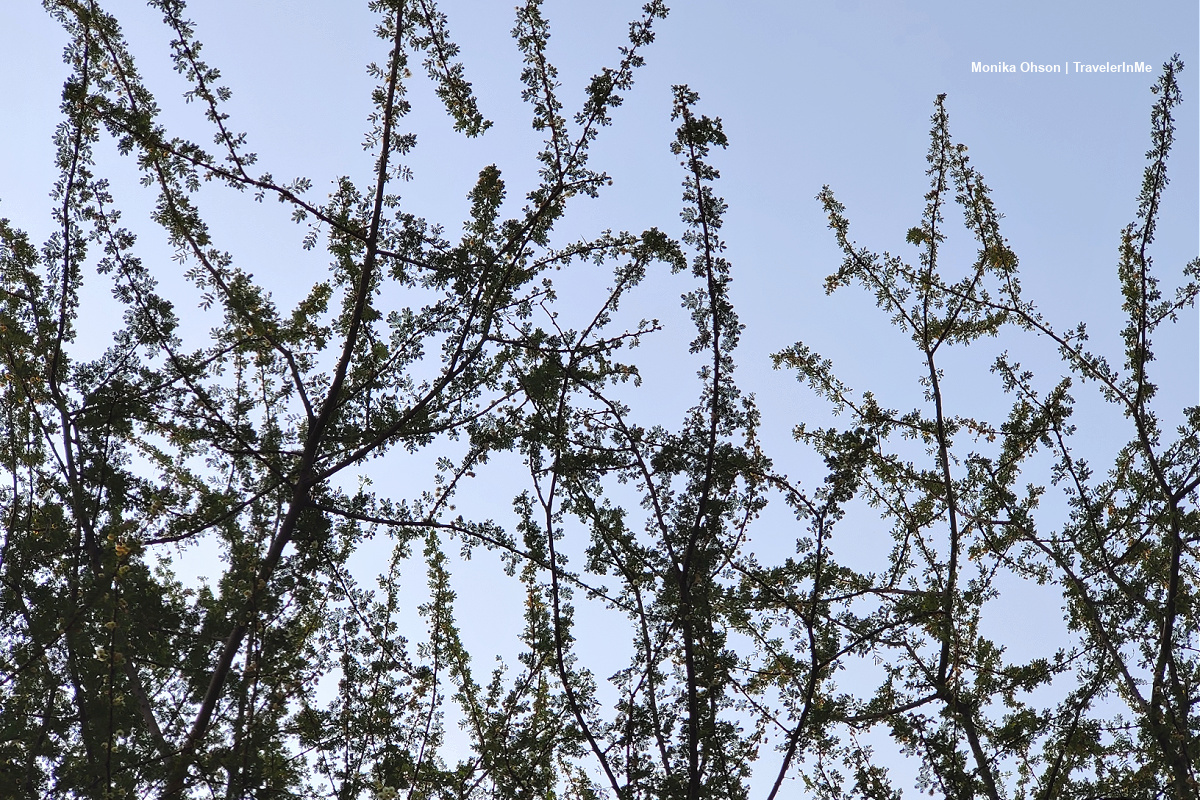
Black Redstart (female) | Phoenicurus Ochruros
In India they are found in the high altitude areas of Kashmir, Ladakh, Tibet and the Central Himalayan Range. Two species of these birds, Phoenicurus Phoenicuroides (Western Himalayas) and Phoenicurus Rufiventris (Central and Eastern Himalayas), both come to Delhi from September through March. Redstarts belong to the Chat Family.

House Sparrow | Passer Domesticus
The State bird of Delhi and fast declining in urban setups. Thankfully the positive side of pandemic helped them thrive within the concrete jungle as well. It is a delight to see them in huge numbers in the green patches of the city. In fact it is the most widely disturbed wild bird in the world.
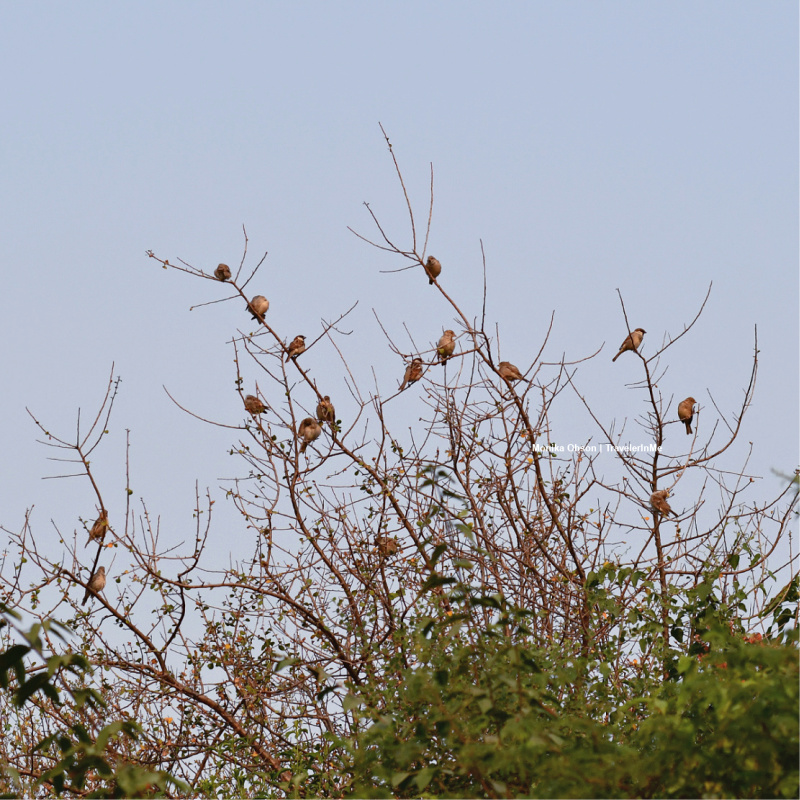

Long-Tailed Shrike | Rufous-Backed Shrike | Lanius Schach Caniceps
Found across Asia with much variations in plumage in subspecies. The genus name, Lanius, is derived from the Latin word for ‘butcher’, after their feeding habits. While their common name ‘shrike’ is derived from an Old English word similar to modern day ‘shriek’, owing to their harsh call. It is rare for songbirds to be predatory, but that’s what our shrike is!

Black Drongo | Dicrurus Macrocercus
A familiar sight in India it is also known as “King Crow” because of it’s aggressive behavior towards birds, even large sized, that invades its territory. Smaller birds often nest in the well-guarded vicinity of a nesting Black Drongo. They are also known to be a good mimic.

Purple Sunbird | Cinnyris Asiaticus
Sunbirds, birds like hummingbirds, honeyeaters, honeycreepers and spiderhunters, are known for ornithophily (pollination of flowering plants by birds). During breeding the male plumage has a metallic bluish to purplish sheen with a tinge of black on the upper & under parts. The wings are of dark brown shade. The eclipse or non-breeding males look similar to the female though they have a central streak of black on yellow underparts.

Common Babbler | Argya Caudata
They are found mainly in India and are different from the Jungle Babbler we see more often. It is a slender with a rather long tail, overall light coloration, a slim bill, streaks on the upper parts (the head, the mantle and the back), dark eyes, and a contrasting whitish throat.
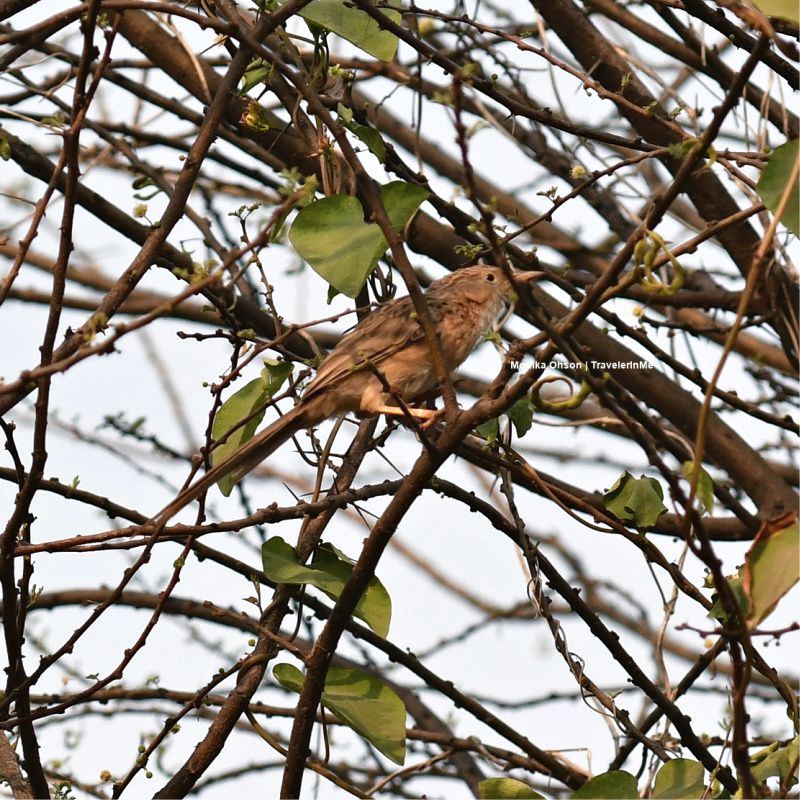
Jungle Babbler | Argya Striata
This species of babblers is found in the Indian subcontinent. They are a gregarious lot moving around in group of six to ten. It is popularly called “seven sisters or brothers“ in different regions of the country. According to a folklorist there is a belief among the Lushai-Kuki clan that ‘…..during a solar eclipse, humans could transform into jungle babblers….’

Indian Robin | Copsychus Fulicatus
Found in most of the SAARC countries, the males of the northern subspecies have brown backs whereas the males of the southern subspecies have an all black back. The Latin word fulicatus means ‘dusky’ or ‘black’. The male sings melodiously during the courtship.
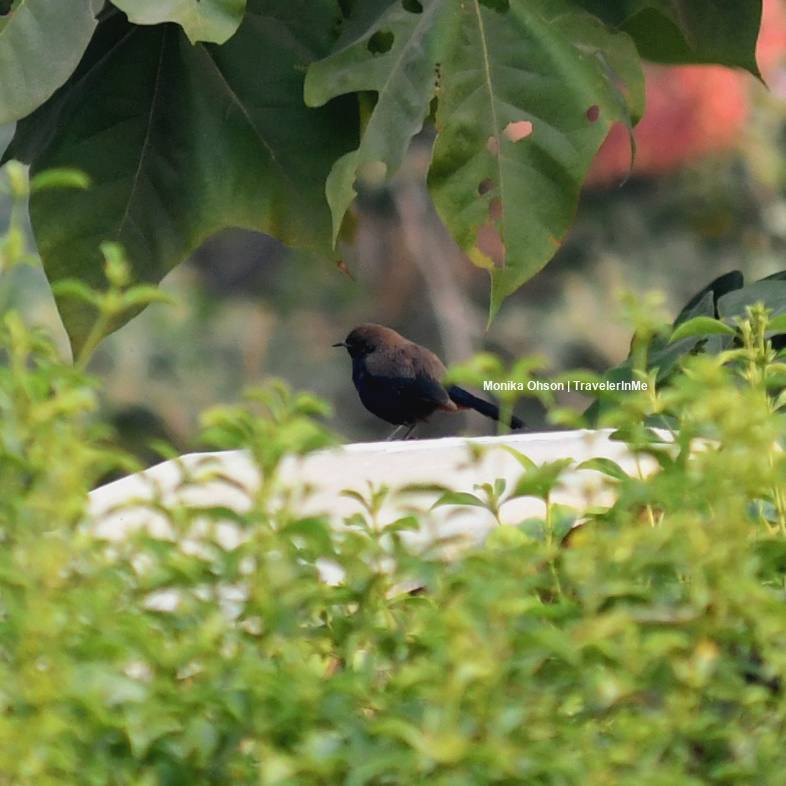
Red-Whiskered Bulbul | Pycnonotus Jocosus
Also known as the Crested Bulbul. It’s distinct crest, white underparts and a bright red patch near the eye are key pointers for its identification. Along with the Red Vented Bulbul this species can be easily spotted in the urban gardens.
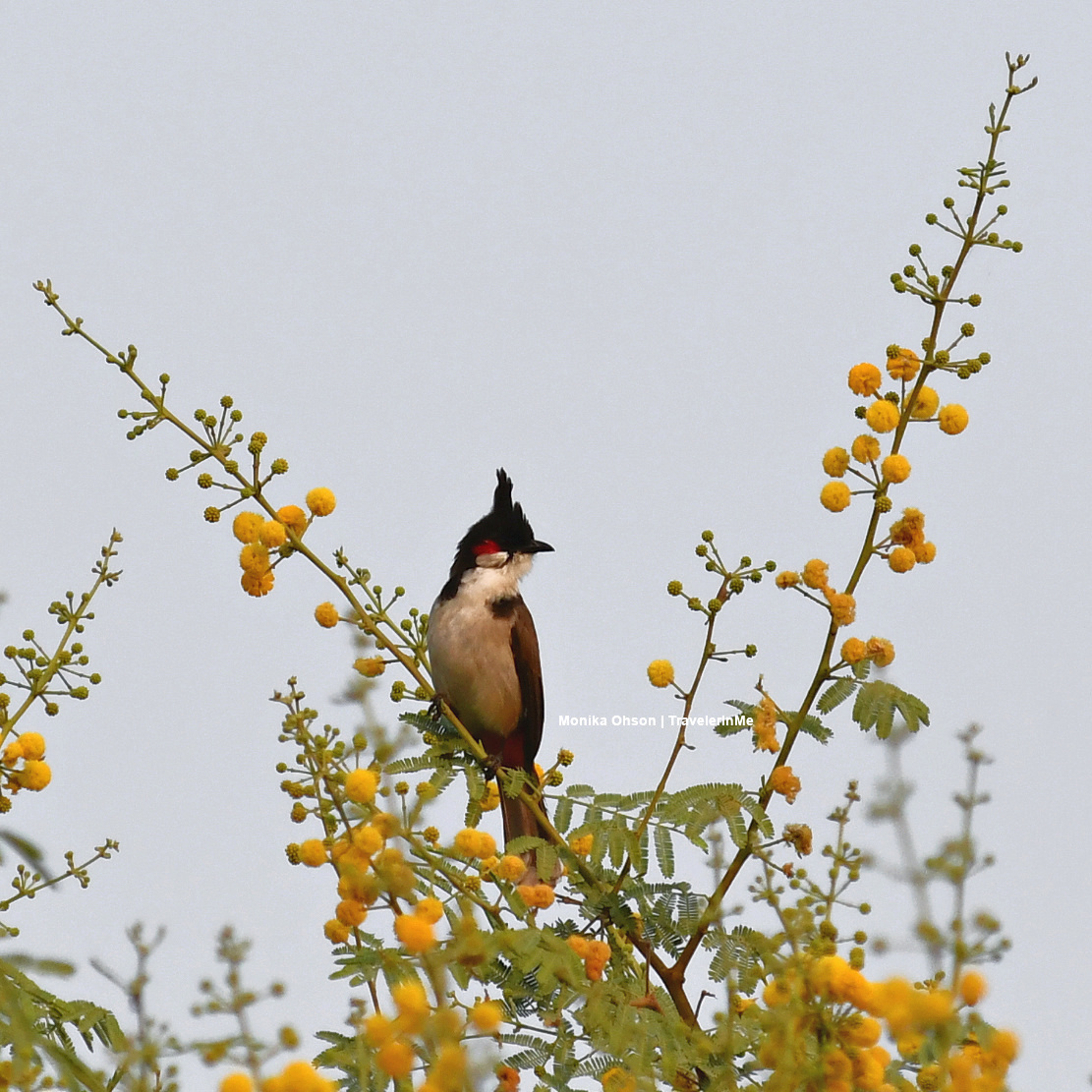
White-Cheeked Bulbul | Pycnonotus Leucotis
Also known as the White-Eared Bulbul, this species is very similar in appearance to the Himalayan White-Cheeked Bulbul. They are named for the large white cheek patches that also cover their ‘ears’. In Iran it is sometimes referred to as ‘The Bulbul of Tehran’.

Red-Vented Bulbul | Pycnonotus Cafer
A resident breeder across the Indian subcontinent and around. It is included in the list of the ‘World’s 100 worst invasive alien species’. “……In 19th-century India these birds were frequently kept as cage pets and for fighting, especially in the Carnatic region. …..”

Indian Silver Bill | Lonchura Malabarica
Also known as the White-Throated Munia, it’s characteristic triangular stubby silver beak gives it it’s name. It resembles the sparrow though it is much plainer in appearance.
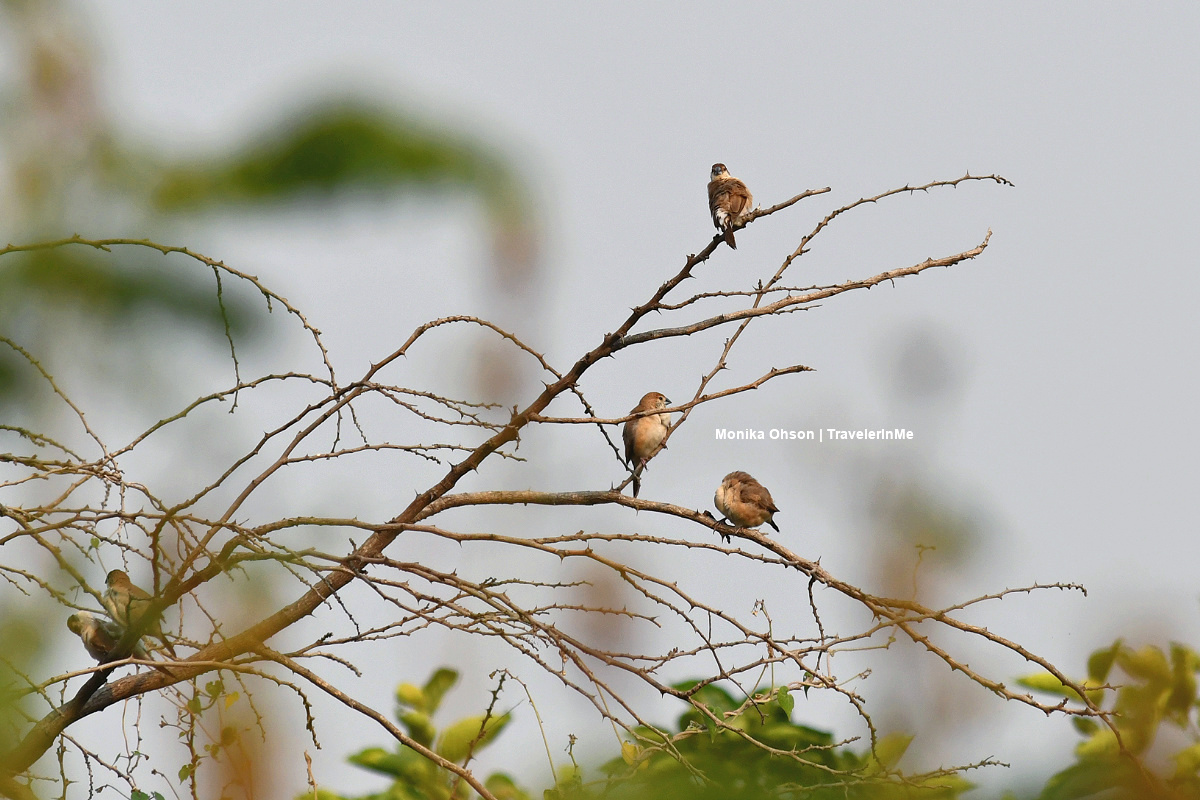

Purple Heron | Ardea Purpurea
A wader that is quite similar in appearance to the grey heron but is slightly smaller, more slender and has a darker reddish-brown plumage. The chief threat the bird faces is drainage and disturbance of its wetland habitats, particularly destruction of the reed beds. The purple heron is one of the species to which the Agreement on the Conservation of African-Eurasian Migratory Waterbirds (AEWA) applies.

Black-Winged Kite | Elanus Caeruleus
It is also known as the the Black-Shouldered Kite. It is a long-winged raptor predominantly grey or white with black shoulder patches, wing tips and eye stripe. It has an owl-like forward-facing eyes with red irises. They are highly nomadic, moving about in search of prey

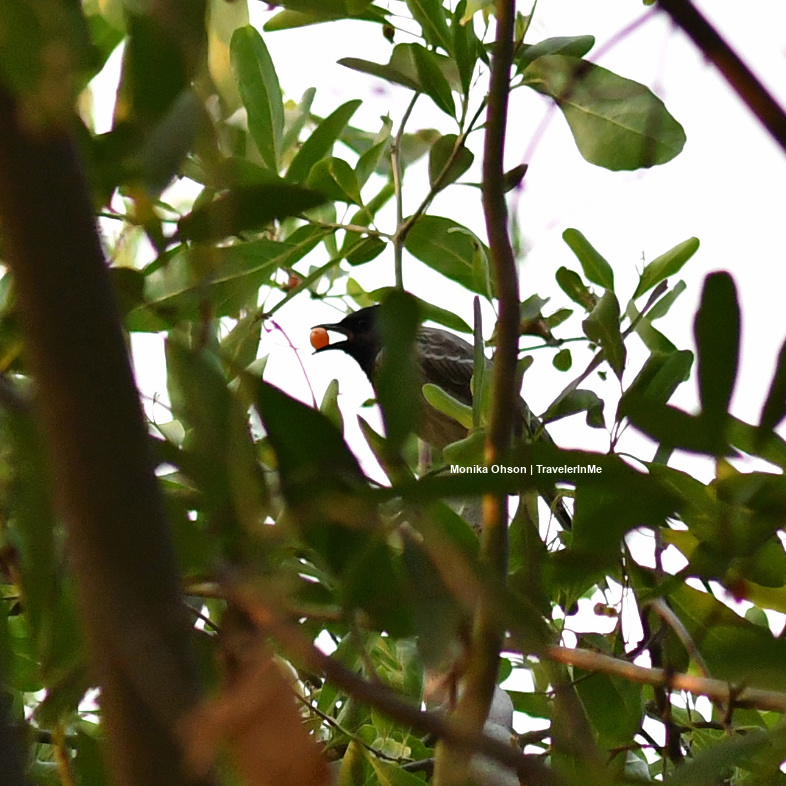
Indian Peafowl | Pavo Cristatus
This beautiful bird is native to the Indian subcontinent. The bird is celebrated in Hindu and Greek mythology and is the National Bird of India. In Buddhist philosophy, the peacock represents wisdom. In Greek mythology the origin of the peacock’s plumage is explained in the tale of Hera and Argus. The main figure of the Yazidi religion, Melek Taus, is depicted as a peacock. A golden peacock is considered by some as a symbol of Ashkenazi Jewish culture, and is the subject of several folktales and songs in Yiddish.

Oriental Magpie Robin | Copsychus Saularis
It is the National Bird of Bangladesh and considered an Old World flycatcher. They are particularly well known for their melodious songs.

Little Swift | Apus Affinis
Swifts are among the fastest of birds! The scientific name for swift, “Apus” comes from the ancient Greek word ‘apous‘ which means “without feet“. The swifts and its relatives form a group called the Apodidae – an ancient group of birds. They probably separated from all other birds in the Tertiary period (65 million years ago)

“We often forget that we are nature. Nature is not something separate from us. So when we say that we have lost our connection to nature, we’ve lost our connection to ourselves.” — Andy Goldsworthy
Tweet

Birds are indicators of the environment. If they are in trouble, we know we’ll soon be in trouble.
Roger Tory Peterson
You can also read about my walk in Delhi’s Aravalli Biodiversity Park here An early morning date with nature
These biodiversity parks are rich in flora and fauna. I will be sharing a separate post on the rich flora of the Gurugram park.
.
.
….and, if you like what you see or read, do ‘like it’ & ‘share it’. Non WordPress users please ‘rate’ it to express your appreciation. Also do not forget to ‘follow the blog’ to remain updated about newer posts.
.
The Soul Is Here For It’s Own Joy!
Monika Ohson | TravelerInMe
Sharing the post on the linky of some fabulous people around the globe
Sue , Betty , Zina , Steve , Sandee , X-Mas Dolly
Pingback: An early morning date with nature | Monika Ohson | TravelerInMe
Such splendid collection. Stay blessed.
LikeLike
I walked with you in the park and I admired the wonderful birds. It’s wonderful, even virtual. ❤️
Thank you for the walk. You are a perfect guide. 😊
LikeLiked by 1 person
Thanks a lot Diana ❤️ I walk was indeed wonderful and I am delighted you enjoyed it too 🙏🏻🙏🏻
LikeLike
Beautiful post, I love the birds and the gorgeous photos!
Thanks for your comment, now I know that it is the 4 o’clock flower in India ;-)))
Greetings from Germany
Traudi.♥
LikeLiked by 1 person
Thanks so much Traudi 💜
Yes …. an easy name based on blooming time 😂, just like the 9 o’clock (portulaca)
LikeLike
Wow ! It is such a fantastic visit to park. Lovely Babool plant blooms.I am from India and live in Jaipur but never got an opportunity to visit this park before thank you for sharing .Beautiful shots of birds.It would be my pleasure if you join my link up party related to Gardening where you can share about plants and flowers here at http://jaipurgardening.blogspot.com/2020/10/garden-affair-bleeding-heart-vine.html
LikeLiked by 1 person
Thank you so much Arun!
The Aravalli is rich in flora and fauna. I hope to share another post from my walk on the flora of Aravalli Biodiversity.
It would be fun to join the link up party. As a start I am sharing an earlier post that is relevant to the subject, I hope it’s fine.
LikeLike
What a gorgeous variety of creatures you found in nature! They are all lovely.
It’s great to see your link at ‘My Corner of the World’ this week !!
LikeLiked by 1 person
Thanks Betty ❣️ Nature’s abundance is divine 💚✨
LikeLike
Absolutely gorgeous.
LikeLiked by 1 person
Thanks Alana ❣️ It was a good time amidst nature. 😍
LikeLike
Nature i fantastic!
Love the photos!
LikeLiked by 1 person
Thanks a lot 💚 Nature is indeed the best!
LikeLike
You’ve found some fascinating wildlife and shared some wonderful shots! Thanks for joining us at https://image-in-ing.blogspot.com/2020/10/beauty-and-beach.html
LikeLiked by 1 person
Thanks Sue 💜 The walk was rewarding 😃
LikeLike
All the birds in the photos are very beautiful, but the photo with Black drongo is spectacular. Thank you for sharing these beauties with us!
Have a fine day, Monika!
LikeLiked by 1 person
Thank you so much Zinaida 💖 The drongo does look awesome in flight and I enjoy photographing it too.
Have a happy week ahead ✨
LikeLiked by 1 person
Captivating post as always. Monika!
Isn’t nature beautiful!
LikeLiked by 1 person
Nature is the ultimate beauty & healer 💚💖
Thanks a lot Veronica!! I am glad you enjoy going through the posts ✨🙏🏻✨
LikeLike
Fabulous post- you have lovely birds in your part of the world! Here we have a Green Herons and Great Blue Herons…..thanks for sharing your birds with us!
LikeLiked by 1 person
Thanks a lot Kathe 💖🐦
The herons are a beauty ….. I have seen some of them from my home’s balcony. Hope to share a post on them soon.
I am glad you enjoyed the winged beauties. Happy a beautiful week ahead!
LikeLike
What a beautiful autumn: colors, birds, fresh air, liberty!
And a good doctor near us: the Nature! Not to forget!
Thank you Monika, for these beautiful shots!
Wishing you an extraordinary week ahead! ❤
LikeLiked by 1 person
Absolutely. You are ✅ , the best doctor is nature. Thanks Suzana, I am happy you enjoyed the post 💚 Have a fabulous week my friend❗
LikeLiked by 1 person
What lovely photos again and pretty too 🙂
Have a gurgaontastic safe week 😷😷😷
LikeLiked by 1 person
Thanks Steve. Glad to know you found them pretty ….. that’s what nature is, right! 💙
LikeLike
Lovely pictures! The one with the butterfly is my favorite.
LikeLiked by 1 person
Thanks a lot! The butterfly one is close to my heart too 💛🦋
LikeLike
a gorgeous post and I love the photos and quotes
LikeLiked by 1 person
Thanks Carol. Hope you have a happy day 😍
LikeLike
What a remarkable walk you had, Monica, with such amazing sighting. I can feel how refreshing it must have been. 🙂
LikeLiked by 1 person
Sarmistha, I am sure you do 💗💚💜 after all we share our love for nature & birds too. It was indeed a good day!
LikeLiked by 1 person
Oh wow, such beautiful pictures and all the beautiful birds. You sure know a good picture when you see one. Thanks so much for sharing and thank you for stopping by. Please stay healthy, be safe and don’t forget that mask!
LikeLiked by 1 person
Thanks a lot. Nature keeps me happy and I guess it translates in the photos I share ❣️ Stay safe & happy❗
LikeLike
A visual treat for every nature lover. Have you written about this park already?
LikeLiked by 1 person
Thanks a tonne Arvind 💗💜💚
The Aravalli range starts in Delhi and passes through Haryana as well. The earlier post was on the Aravalli Biodiversity Park in Delhi. This post is on the one in Gurugram/Gurgaon.
LikeLiked by 1 person
Thanks, Monika. Let me take the liberty of correcting you, Aravali starts near Raj-Gujarat border and travels all the way to Delhi. 🙂
I’ll read the post you suggested. Thanks, Monika 🙂
LikeLiked by 1 person
Ok. Each end is a start point too. So both of us are right 😂 😂
LikeLiked by 1 person
haha! It is definitely not about who wins or loses! Your point is right, Monika!
LikeLiked by 1 person
True that 😀
LikeLiked by 1 person
Smart, you are
LikeLiked by 1 person
😍😁
LikeLike